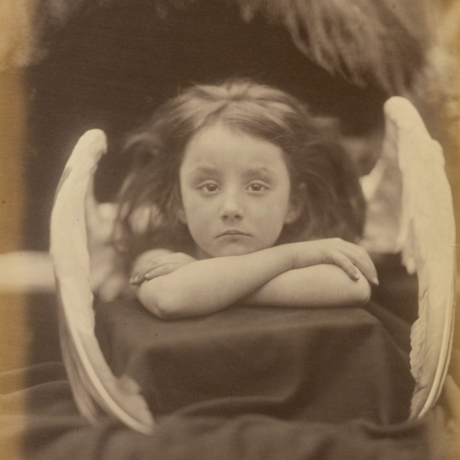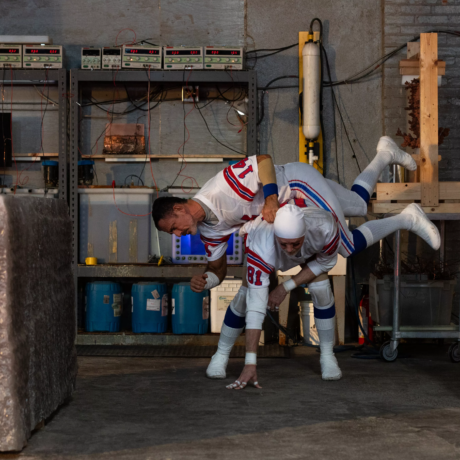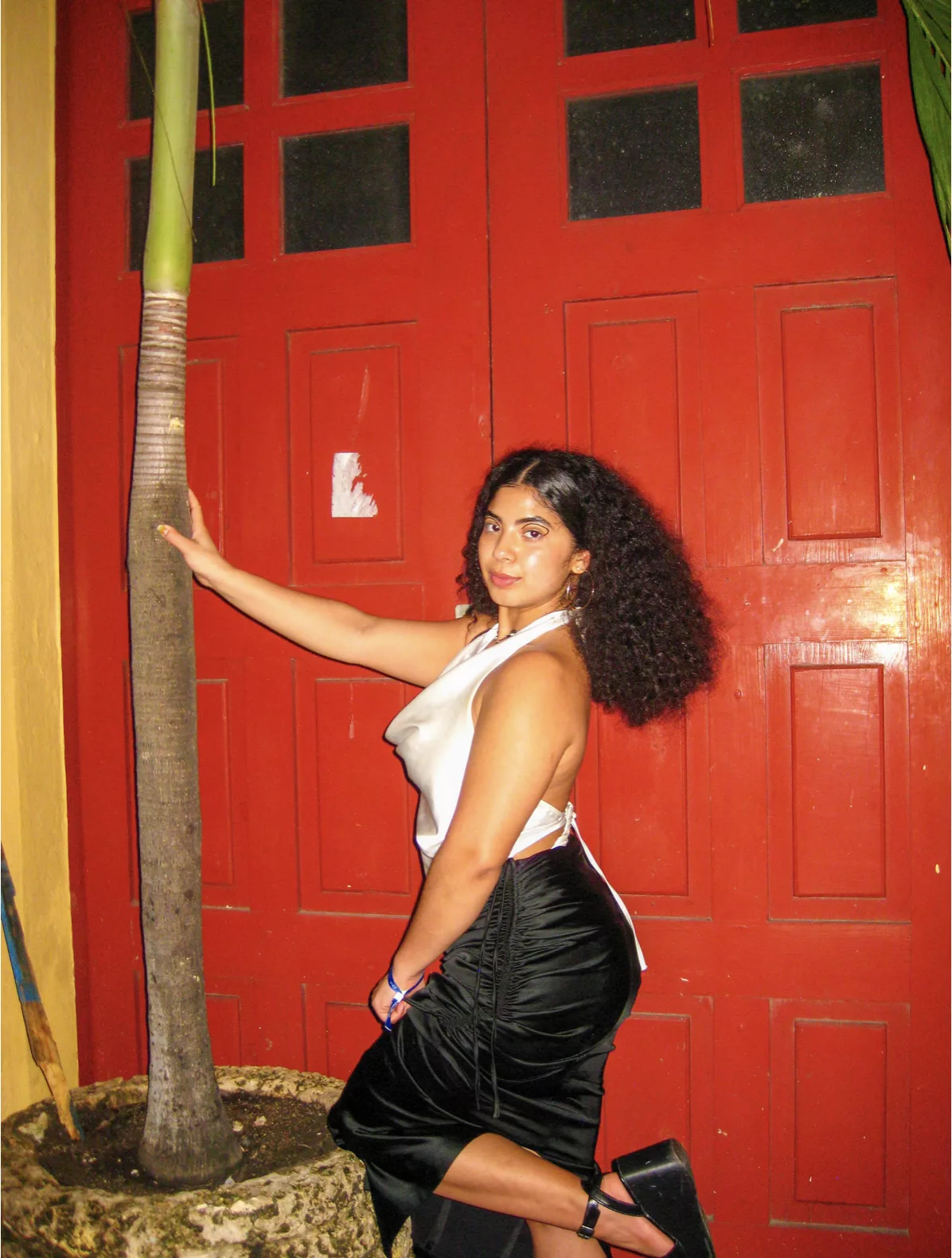
It’s difficult to put my trip to the Dominican Republic for MECA 2024 into words because it was filled with so much energy. Let’s begin with the basics. There was a lot of looking at art, walking and dancing. There were also lots of people and lots of conversations about said art and dancing.
Being there was special not only because I’m Dominican and this was my first time going to the motherland for work but also because I felt like I was a part of a bubbling movement in the art world. Back home in NYC, I wouldn’t usually want to attend every opening, event, or party, but here, during MECA Art Week, I did. I wanted to witness everything.

What a joy it was to wake up every day to the sounds of roosters in the morning. Grab a cup of Dominican coffee, eat mangu and fried eggs, and go on my merry way to see art. One cannot even compare MECA to other fairs like Art Basel Miami. Even on a smaller scale, MECA is creating a more intentional space in the Caribbean and prioritising the work of Black and Brown artists. I think it’s important to see and experience this work outside of the USA. Founded by Tony Rodríguez and Danny Báez, the MECA International Art Fair took place in March in a part of DR’s capital called La Zona Colonial, which translates to The Colonial Zone. Zona Colonial marks the area where Columbus settled in the New World. How badass to reclaim the first spaces Spanish colonisers set foot on in the Americas (1496). As someone who was once an art history student who studied abroad in Madrid and unfortunately saw too many images of Spanish court paintings and still life paintings of all the fruit, meat, and spices that they were able to acquire with the riches they gained from capitalising off the Americas and the labour of our ancestors. Seeing Black and Brown artists showing their artwork in these spaces made my heart smile. Even centuries later, this is a moment of celebration.

Knowing this history, I found joy in seeing Black and Brown artists, visionaries, and gallerists reclaim these Spanish-style buildings. At the fair, I was drawn to the Superposition booth, which featured Peruvian-Dominican artist Diana Eusebio. Eusebio presented new textile works made with natural dyes and adorned with plants; at the centre of the pieces were images based on her family stories and their memories in DR. The MECANISMOS section, dedicated to independent spaces, young artists, and new curatorial endeavours, caught my eye as I saw art that took risks. I saw narratives that pulled towards the island and Latinx street culture in The Rulay Magazine booth co-curated by artist John Rivas, who presented an experimental group show, “Donde come uno, comen dos”, where they meshed photo, installation, painting, video, and sculptural works by Dominican and Salvadorian artists. Tapping into divine feminine energy, Quiara Torres’s solo booth presented new paintings, all made in DR, that were portraits of animals and women on found potato sacks, wood panels, and even a door. Jehdy Ann Vargas spoke about womanhood through a large sculpture in which a bedsheet was being held up by two large tree branches. Light brown and red markings were made with blood. While walking around the fair, I saw a plethora of works made out of earthy materials —plants, branches, and even clay. It was as if the artists were calling towards more connections with the earth and nature. On March 22, within the MECA art talks section of the fair, I moderated the “Earth, Body, Spirit” panel talk, which included artists Patricia Encarnación, Charo Oquet, Quiara Torres and Diana Eusebio – Dominican women artists who are actively exploring the expansiveness of spirituality and decolonial acts within their intuitive art practices. My intention with this talk was to highlight this movement of cross-generational women artists whose practices are rooted in Afro-Indigenous storytelling and ancestral knowledge in response to the Caribbean landscape. I was moved by all the stories they shared during the talk. Stories on resilience. Intention. Care. And particularly balancing the deep care they each have for their community while also making time to care for themselves and their art practices. This is where the intuition kicks in. They shared how they listen to their intuition to push forward their career.
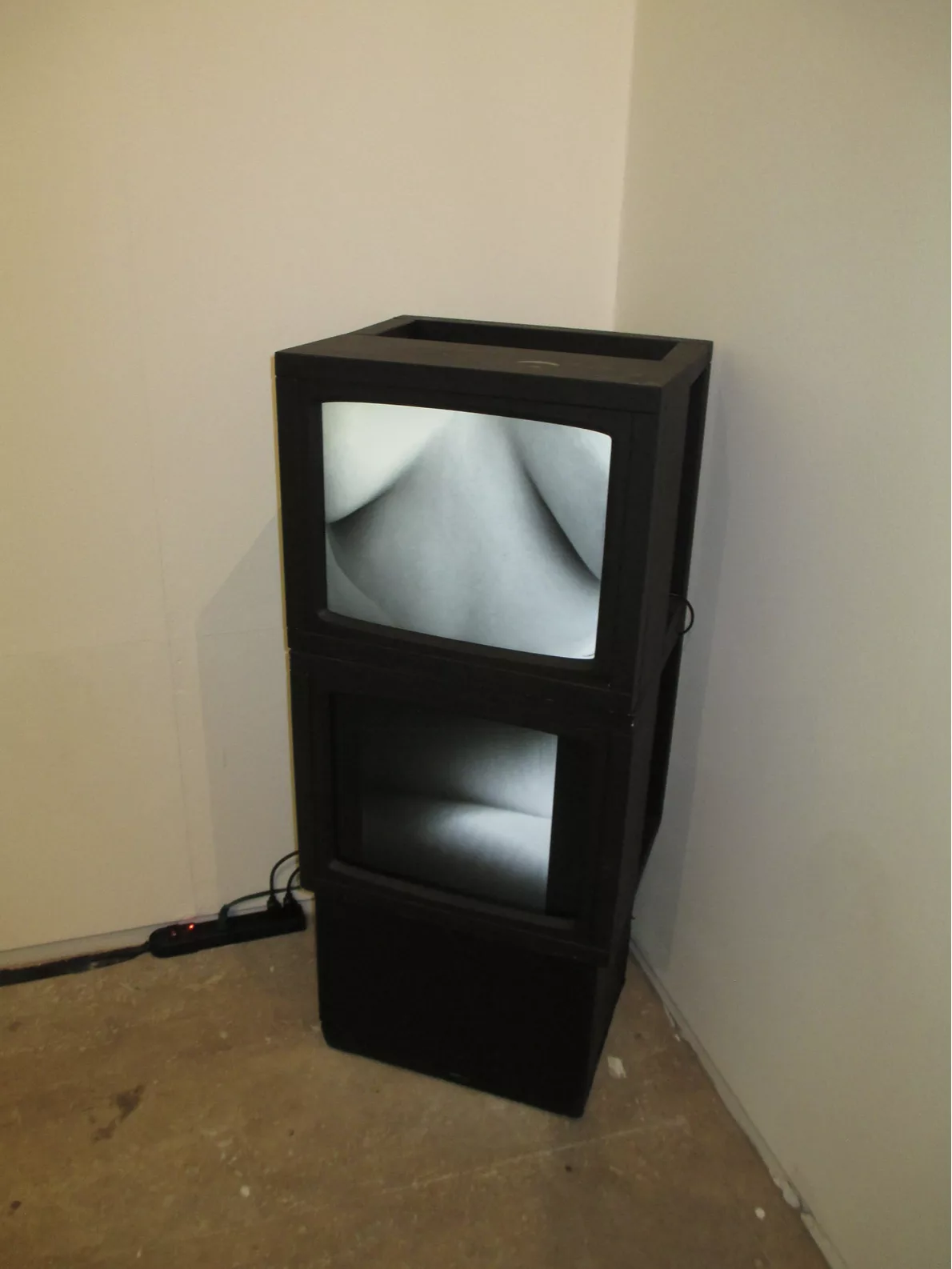
Throughout the course of the week, I noticed more and more connections between artist networks. Everyone was connected to everyone. Everyone was supporting one another. Many of the artists and curators participating in the fair were also organising and/or showing in the exhibitions outside of the fair. Dulcina Abreu, who is a part of MECA’s curatorial committee, curated “& Many Others Would Follow” at a space nearby which featured artists Andrés Altamirano, Julianny Ariza Volquez, Olivier Bur, Fabio Hendry, Guy Kozac, Natalie Landestoy, Marco Caputo, Thimo Pimentel, Maria-Elena Pombo, and Charlie Quezada. The exhibition centred on the artist’s methodologies, research, and investigation. I appreciated how Abreu curated objects into the show that beautifully reveal the artist’s process by placing paintings, photographs, and sculptures alongside materials such as spices, honey, and sand. A few blocks over, Edge Zones, a gallery based in Miami founded by Charo Oquet, presented “Caribbean Connections”, which featured the works of Eliu Almonte, Patricia Castillo, Yanira Collado, Patricia Encarnación, Jainsen, Arlyn Jimenez, Kandy G Lopez, Pepe Mar, Yuly Monción, Charo Oquet, Iris Perez, and Victoria Ravelo. Connecting Miami to DR, the exhibition aimed to question, “After enduring generations of colonialism, power struggles, and cultural amalgamation, can a single definition truly encapsulate this region and its art?” Going against stereotypes about Caribbean art, the exhibitions displayed that art from our region is expansive and has no bounds. Furthering the conversation,” Reguardades,” an exhibition curated by Andrea Diaz, Manuela Hidalgo, and Patricia Encarnación, explores how women and feminised individuals utilise art to create safe spaces for themselves and their communities. The show included works by Adela Dore, Ana María López, Andrea Ottenwalder, Diana Eusebio, Geraldine Rivera, Gina Goico, Johanna Castillo, Johanné Gómez Terrero, Julianny Ariza, Karla Read, Letty Sanchez, Martha Diaz Adam, Maria Monegro, Nana Baez, Nathalie Landestoy, Patricia Castillo, Quiara Torres, Thelma Vanahí, Yelaine Rodriguez, and Yessica Montero. With 20 participating artists, this project was a huge call to focus on the importance of inclusion and gender equality in the art world. When walking through the show, I was delighted to see an emphasis on textiles and playful materials. There was a conceptual and spiritual undertone, which I appreciated. I saw a multitude of mediums, objects, and materials related to the feminine experience and Caribbean culture. This sense of diversity in mediums throughout the show was refreshing to experience.
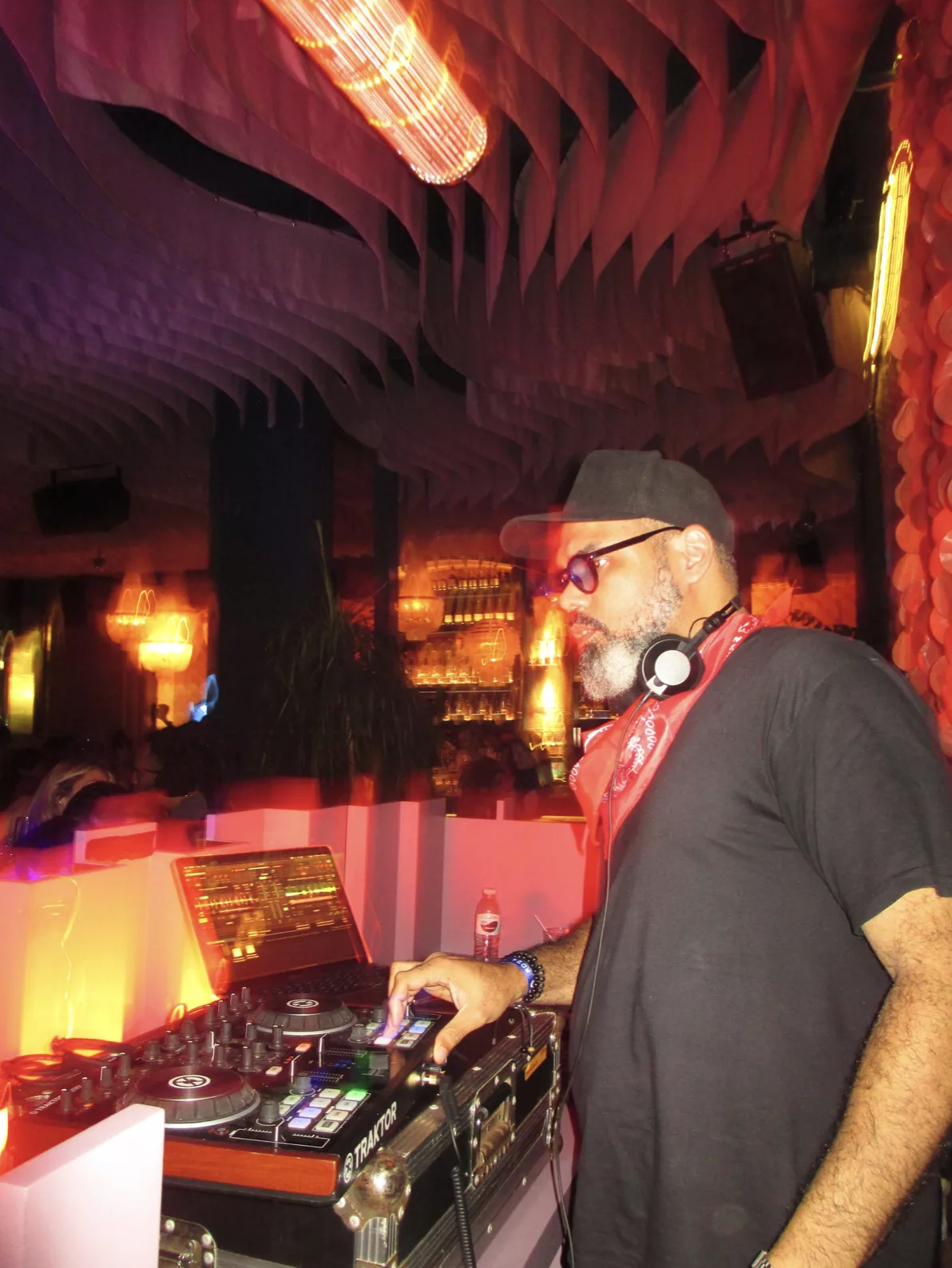
Selenas Mountain collaborated with Rulay Magazine to present an off-site exhibition titled “Junta De Vecinxs” featuring the works of Eliazar Ortiz, Tiempo De Zafra, Sandra Blow, Digno Roa, Quiara Elaine Torres, Elvin Tavarez, Patricia Encarnacion, Andrew Adames, Juan Arango Palacios, Ricardo Partida, and Yelaine Rodriguez. The exhibition title, translating to “Neighborhood Meeting”, sums up the energy of the presentation, one of community, important cross-cultural conversations, and also the space serving as a meeting point. One of the most memorable parties of the week was hosted here, where Rulay teamed up with Mad Ethnik to throw the “Junta De Vecinxs” afterparty. For the heavily anticipated night, I made sure to wear my custom skirt made by Tiempo De Zafra, one of DR’s hottest art and fashion brands. With the super-talented lineup composed of Dominican DJs and musicians, the crowd was going wild all night. I loved how the Uptown Dominicans were well-represented with iconic sets and performances by Total XTC, Dada Cozmic, AKA The Dark Knight, and Saso. The famous Dominican Dembow artist Pablo Piddy gave a legendary performance, which was special because the magazine’s name is inspired by his popular 2012 song “Rulay.” The people were twerking, clapping, had one hand up in the air with a drink in the other, and were chanting sounds of encouragement – “aye! aye! aye!” And by people, I mean me, I am people. The people are me. At the end of the night, the party was shut down by the police, but we all gathered outside and started parading throughout La Zona as a group. The twerking and “aye! aye! aye!” continued towards the pier. Drunk at the end of the night, my friends and I shared a plate and enjoyed some delicious pollo al horno, platano maduros, and yuca. It slapped. I can’t believe I’m saying this, but that plate. That plate from the late-night chicken spot was as good as my grandmother’s cooking.
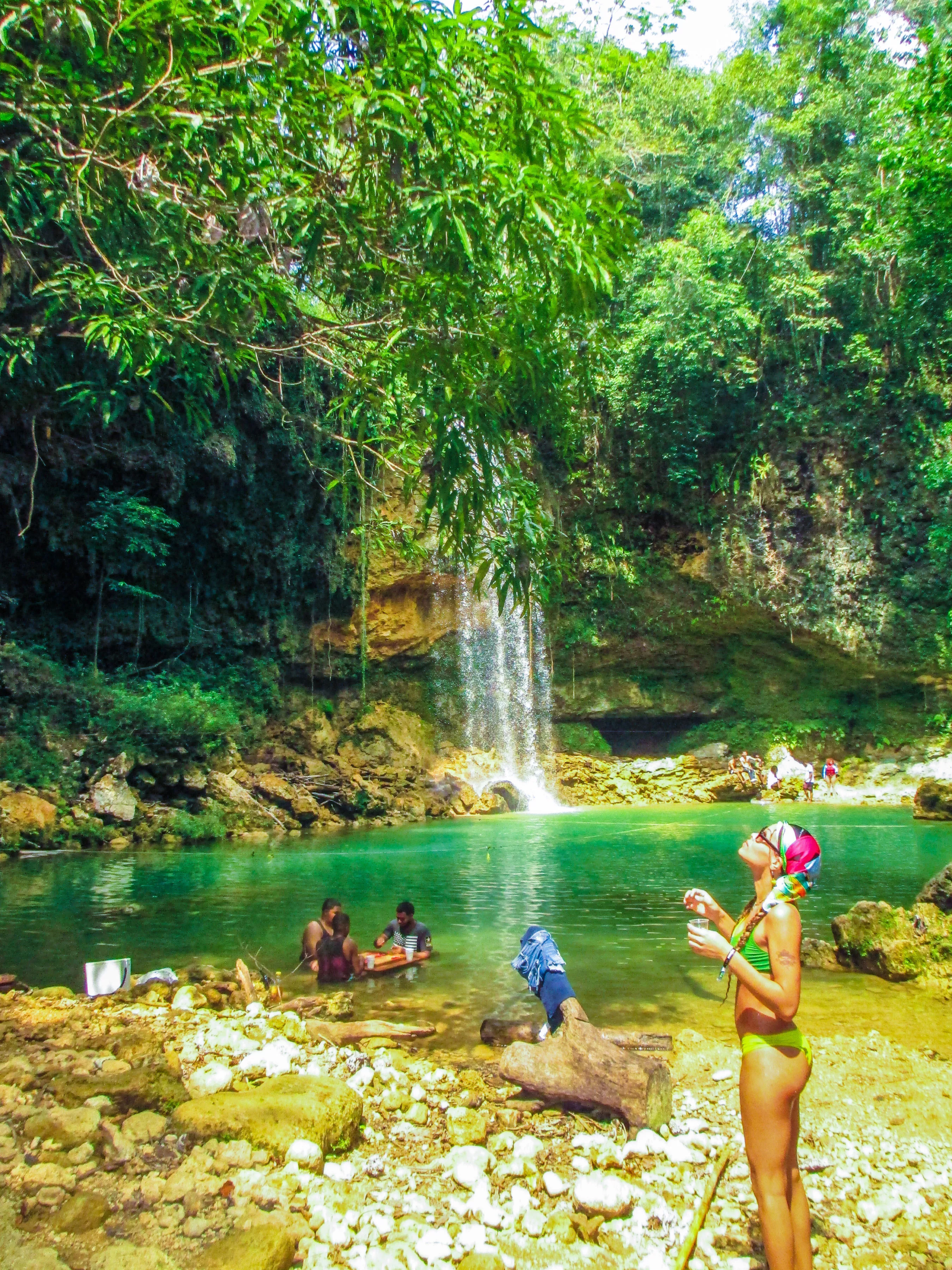
The last days of the trip were slowly approaching, so my friends and I decided to visit a local waterfall near the capital. It was healing to be in a natural waterfall with friends. Period. We spent most of our day swimming, having deep conversations, applying natural clay masks, and drinking Brugal. Something I truly appreciated about this trip is the fact that I got to spend actual quality time with my peers and friends in the art world. I love following everyone on social media, but to see everyone almost every day in DR at the fair, at their exhibition, on the street, at a party, at a restaurant, at a waterfall…. is unmatched. Here, we were constantly IN community. We got to experience one another’s practices in the moment. We exchanged. We developed a deeper understanding of one another’s work. That’s something a digital platform could never do. Could never. Sometimes, the art world lacks a sense of intimacy. Closeness. I didn’t feel that here.
Many of us are fed up with being excluded. So, activations like this are important. Even among the chaos in the world and stresses….these are the moments in life where I’m so thankful to be living at the same time as my peers. We are not perfect, but we are all trying. We are going out there and trying. With trying. With showing up. With genuine exchanges of energy. With vulnerable art making. With linking up with the community. Pushing bounds, even if we don’t have language for it yet, is a movement in the making.

